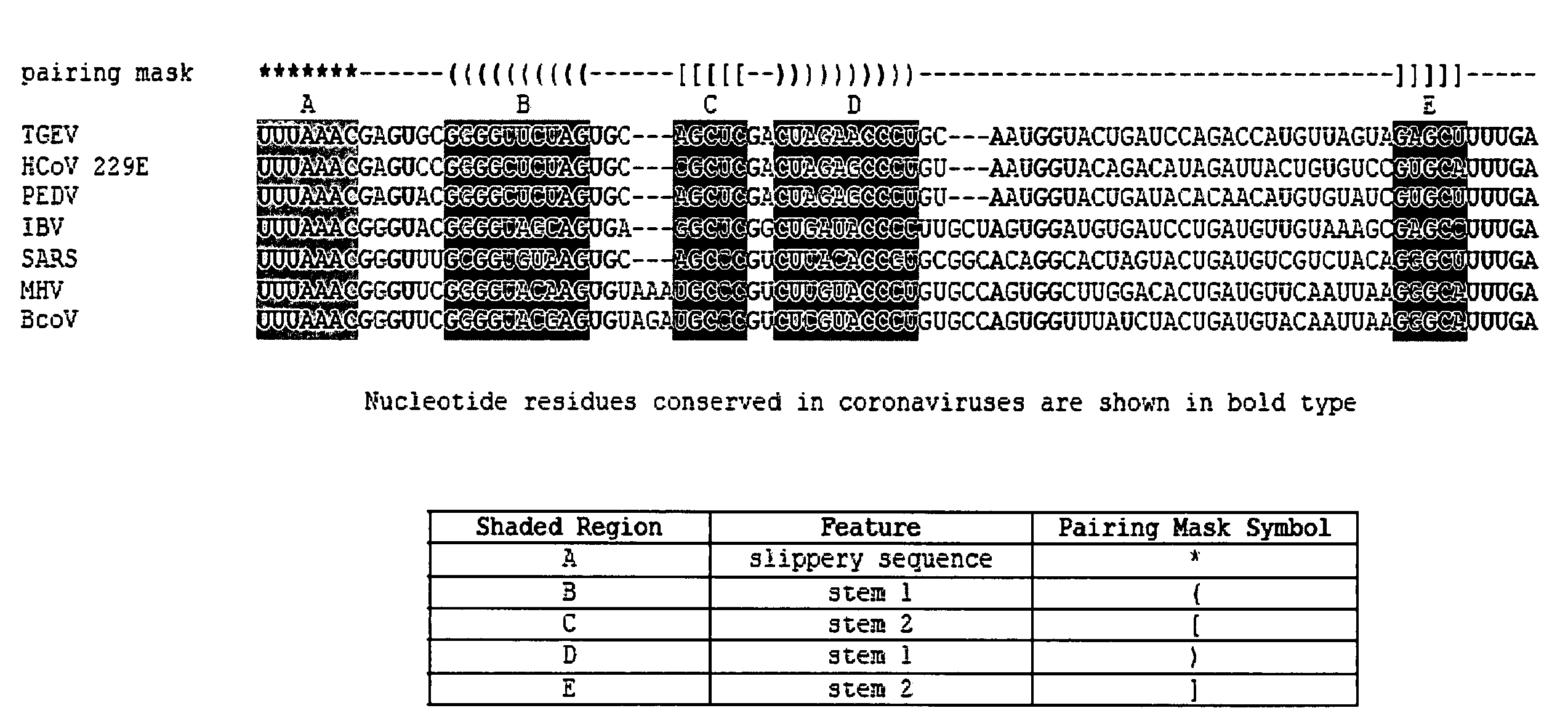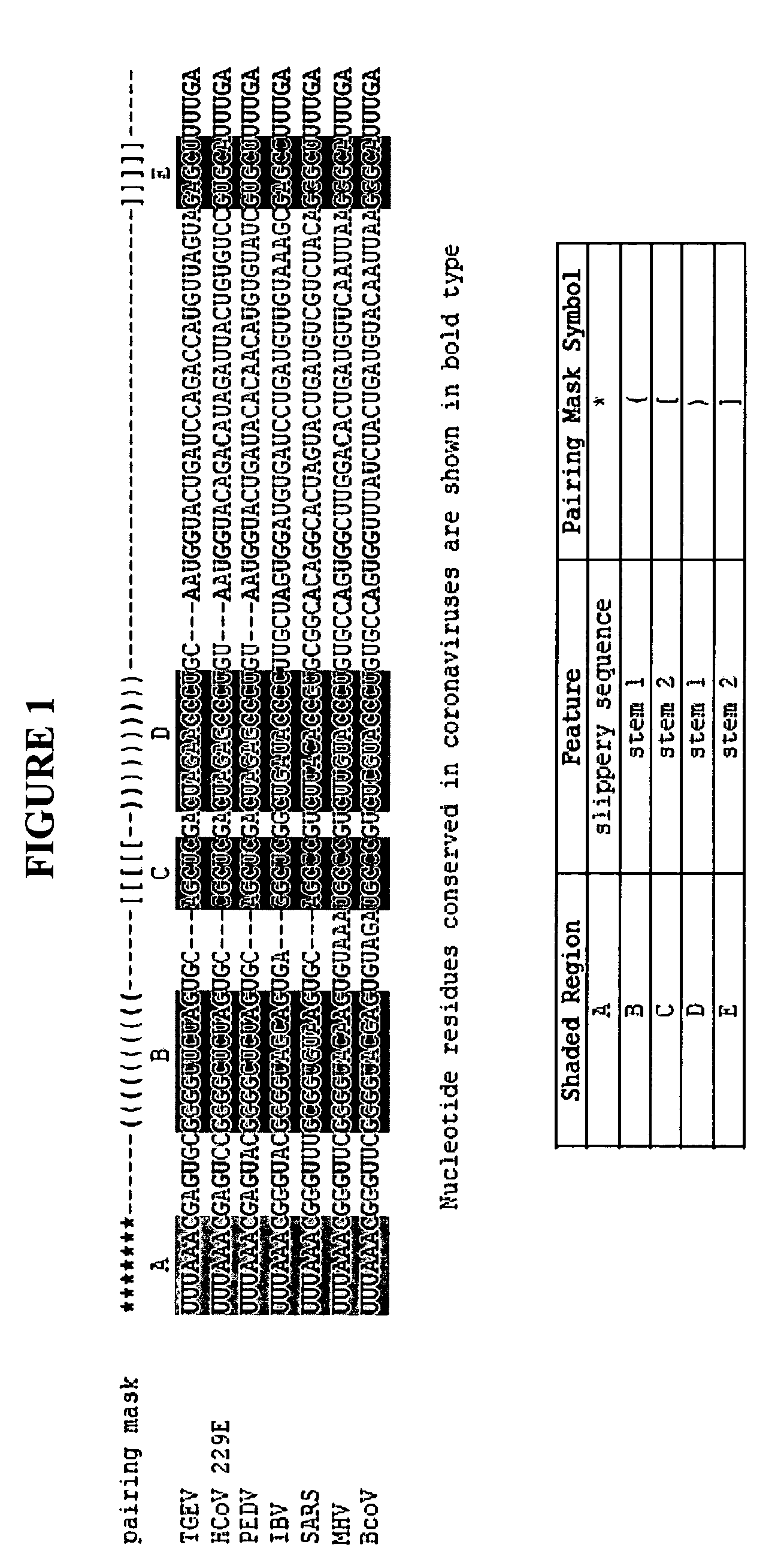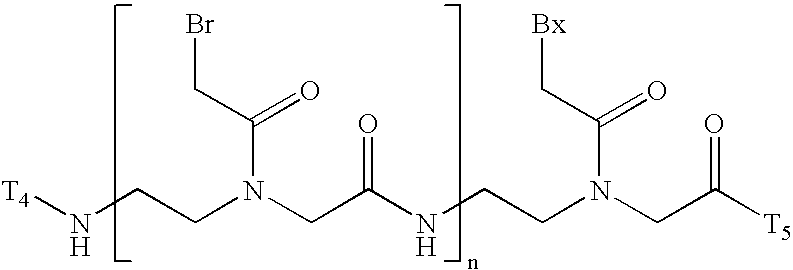Compositions and methods for the treatment of severe acute respiratory syndrome (SARS)
a technology for respiratory syndrome and compositions, applied in the field of compositions and compositions for the treatment of severe acute respiratory syndrome, can solve the problems of high frequency of recombination, inability to analyze in detail, and poor culture growth of human coronaviruses, so as to reduce the expression of sars virus
- Summary
- Abstract
- Description
- Claims
- Application Information
AI Technical Summary
Benefits of technology
Problems solved by technology
Method used
Image
Examples
example 1
Synthesis of Nucleoside Phosphoramidites
[0297]The following compounds, including amidites and their intermediates were prepared as described in U.S. Pat. No. 6,426,220 and published PCT WO 02 / 36743; 5′-O-Dimethoxytrityl-thymidine intermediate for 5-methyl dC amidite, 5′-O-Dimethoxytrityl-2′-deoxy-5-methylcytidine intermediate for 5-methyl-dC amidite, 5′-O-Dimethoxytrityl-2′-deoxy-N4-benzoyl-5-methylcytidine penultimate intermediate for 5-methyl dC amidite, (5′-O-(4,4′-Dimethoxytriphenylmethyl)-2′-deoxy-N4-benzoyl-5-methylcytidin-3′-O-yl)-2-cyanoethyl-N,N-diisopropylphosphoramidite (5-methyl dC amidite), 2′-Fluorodeoxyadenosine, 2′-Fluorodeoxyguanosine, 2′-Fluorouridine, 2′-Fluorodeoxycytidine, 2′-O-(2-Methoxyethyl) modified amidites, 2′-O-(2-methoxyethyl)-5-methyluridine intermediate, 5′-O-DMT-2′-O-(2-methoxyethyl)-5-methyluridine penultimate intermediate, (5′-O-(4,4′-Dimethoxytriphenylmethyl)-2′-O-(2-methoxyethyl)-5-methyluridin-3′-O-yl)-2-cyanoethyl-N,N-diisopropylphosphoramidite ...
example 2
Oligonucleotide and Oligonucleoside Synthesis
[0298]The oligomeric compounds used in accordance with this invention may be conveniently and routinely made through the well-known technique of solid phase synthesis. Equipment for such synthesis is sold by several vendors including, for example, Applied Biosystems (Foster City, Calif.). Any other means for such synthesis known in the art may additionally or alternatively be employed. It is well known to use similar techniques to prepare oligonucleotides such as the phosphorothioates and alkylated derivatives.
Oligonucleotides
[0299]Unsubstituted and substituted phosphodiester (P═O) oligonucleotides are synthesized on an automated DNA synthesizer (Applied Biosystems model 394) using standard phosphoramidite chemistry with oxidation by iodine.
[0300]Phosphorothioates (P═S) are synthesized similar to phosphodiester oligonucleotides with the following exceptions: thiation was effected by utilizing a 10% w / v solution of 3,H-1,2-benzodithiole-3-...
example 3
RNA Synthesis
[0311]In general, RNA synthesis chemistry is based on the selective incorporation of various protecting groups at strategic intermediary reactions. Although one of ordinary skill in the art will understand the use of protecting groups in organic synthesis, a useful class of protecting groups includes silyl ethers. In particular, bulky silyl ethers are used to protect the 5′-hydroxyl in combination with an acid-labile orthoester protecting group on the 2′-hydroxyl. This set of protecting groups is then used with standard solid-phase synthesis technology. It is important to lastly remove the acid labile orthoester protecting group after all other synthetic steps. Moreover, the early use of the silyl protecting groups during synthesis ensures facile removal when desired, without undesired deprotection of 2′ hydroxyl.
[0312]Following this procedure for the sequential protection of the 5′-hydroxyl in combination with protection of the 2′-hydroxyl by protecting groups that are...
PUM
| Property | Measurement | Unit |
|---|---|---|
| diameter | aaaaa | aaaaa |
| size | aaaaa | aaaaa |
| time | aaaaa | aaaaa |
Abstract
Description
Claims
Application Information
 Login to View More
Login to View More - R&D
- Intellectual Property
- Life Sciences
- Materials
- Tech Scout
- Unparalleled Data Quality
- Higher Quality Content
- 60% Fewer Hallucinations
Browse by: Latest US Patents, China's latest patents, Technical Efficacy Thesaurus, Application Domain, Technology Topic, Popular Technical Reports.
© 2025 PatSnap. All rights reserved.Legal|Privacy policy|Modern Slavery Act Transparency Statement|Sitemap|About US| Contact US: help@patsnap.com



